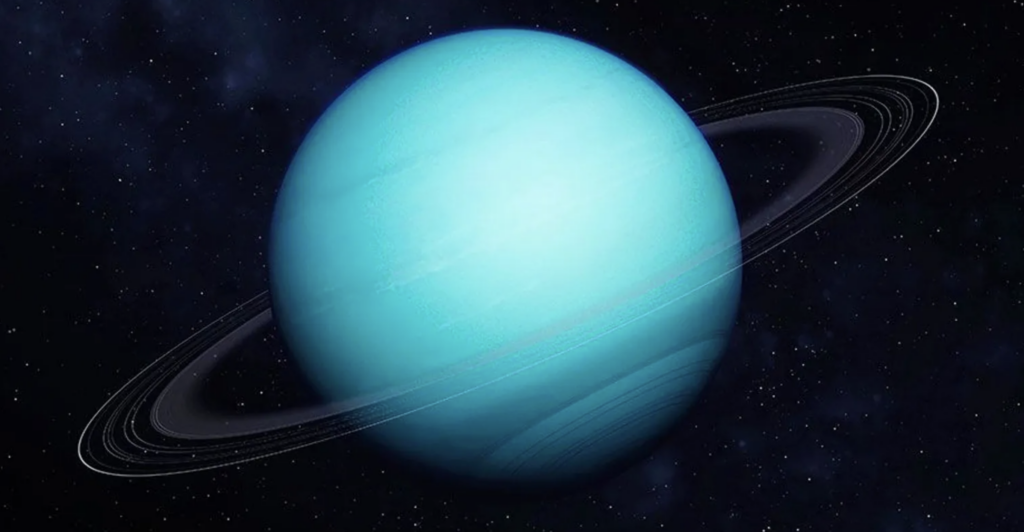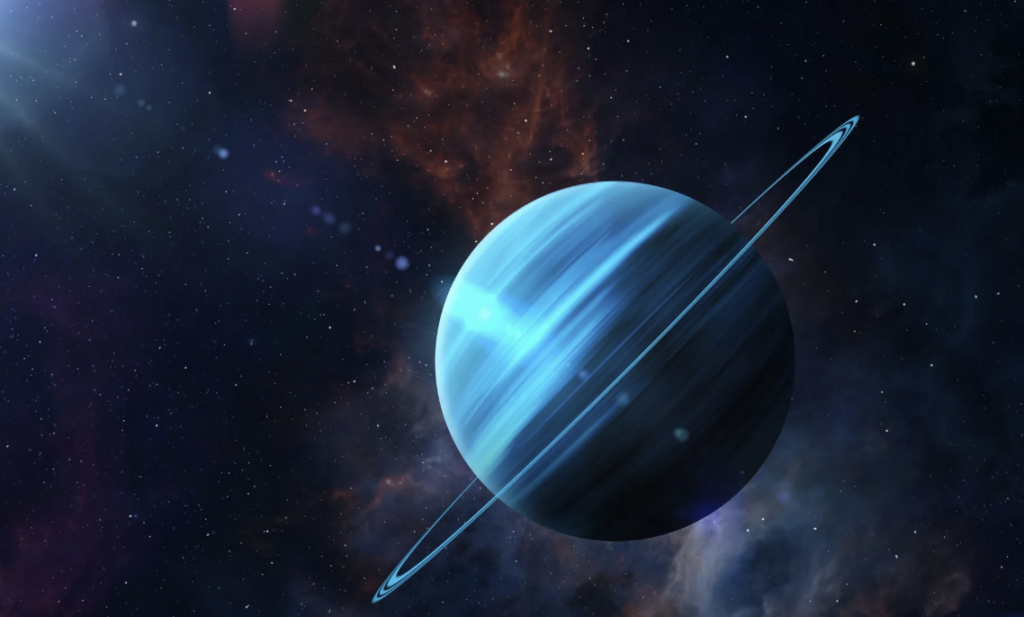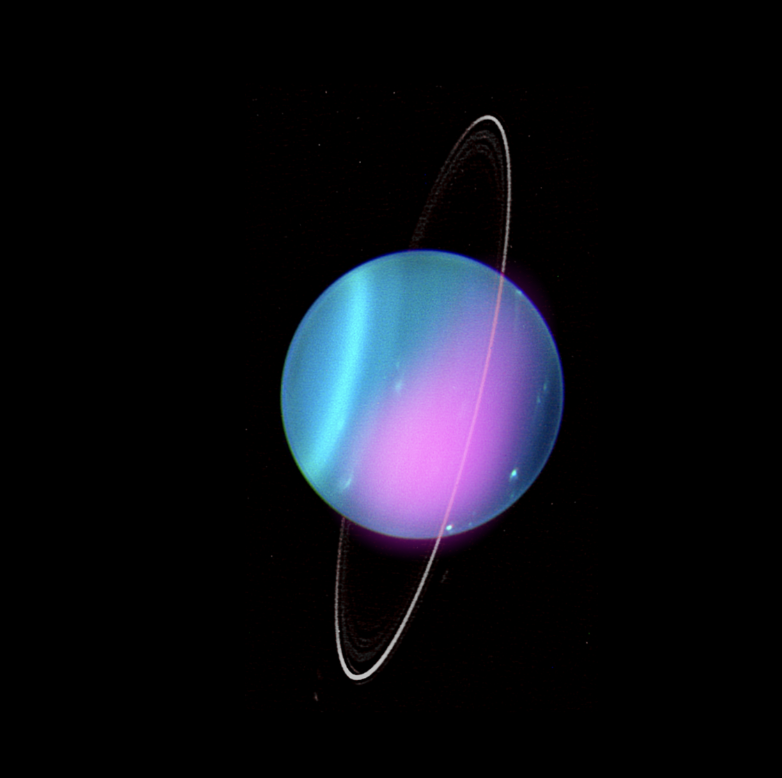A Fascinating Journey into the Satellite System of the Seventh Planet
Uranus, the seventh planet from the Sun, is a captivating celestial object that has piqued the curiosity of astronomers and space enthusiasts alike. Among the many mysteries surrounding this distant giant, one intriguing question arises: How many moons does Uranus have? In this article, we will embark on an exploration of Uranus’ satellite system, shedding light on its diverse collection of moons and the discoveries made thus far.

Discovering Uranus’ Moons
The quest to unveil Uranus’ moons began in 1781 when William Herschel first observed the planet. Initially, Herschel believed he had discovered rings encircling Uranus, but subsequent observations proved otherwise. It wasn’t until 1851 that William Lassell identified the first two moons of Uranus—Ariel and Umbriel. Since then, technological advancements and dedicated space missions have revealed more of Uranus’ enigmatic companions.
The Current Count
As of the latest knowledge, Uranus boasts a total of 27 confirmed moons. These moons are named after characters from the works of William Shakespeare and Alexander Pope. The five largest moons, known as the major moons, are Miranda, Ariel, Umbriel, Titania, and Oberon. They were discovered in the 19th century and remain the most well-studied of Uranus’ moons.

The Major Moons of Uranus
- Miranda: Discovered in 1948 by Gerard Kuiper, Miranda stands out with its diverse and complex terrain. It features cliffs, canyons, and impact craters, suggesting a turbulent geological history. Miranda’s unique appearance has fueled scientific curiosity, making it an intriguing subject of study.
- Ariel: William Lassell discovered Ariel in 1851, just a few years after his initial discovery of Uranus’ moons. Ariel exhibits a relatively smooth surface, with few visible impact craters. Its geological activity, marked by fault systems and valleys, indicates that internal processes have shaped this moon over time.
- Umbriel: Also discovered by William Lassell in 1851, Umbriel is the darkest and most heavily cratered of Uranus’ major moons. Its surface is ancient and densely pockmarked with impact craters. Scientists believe that its craters formed early in the history of the solar system and have remained relatively unchanged since.
- Titania: Discovered in 1787 by William Herschel, Titania is the largest moon of Uranus and the eighth-largest moon in the solar system. Its surface exhibits a wide range of geological features, including valleys, craters, and rifts. Titania’s diverse topography suggests a complex geological history involving past tectonic and volcanic activity.
- Oberon: Also discovered by William Herschel in 1787, Oberon is the second-largest moon of Uranus and the tenth-largest moon in the solar system. Its surface is heavily cratered, similar to Umbriel, indicating a similar ancient history. Oberon’s dark patches and bright craters provide valuable insights into its composition and geological processes.
The Lesser Moons of Uranus
In addition to the major moons, Uranus possesses a number of smaller moons that continue to be the subject of ongoing research and discovery. Some of these lesser-known moons include Puck, Portia, Cressida, Desdemona, and Juliet, to name a few. While they may not receive as much attention as their larger counterparts, these moons contribute to our understanding of Uranus’ complex satellite system.

Conclusion
Uranus’ moon system, consisting of 27 known moons, is a fascinating realm that offers valuable insights into the formation and evolution of this enigmatic planet. From the major moons with their diverse geological features and intriguing histories to the lesser-known moons that continue to be explored, each moon holds its own significance in unraveling the mysteries of Uranus.
While much progress has been made in understanding Uranus’ moons, there is still much to learn. Future missions and technological advancements will undoubtedly contribute to our knowledge of these celestial bodies. The exploration of Uranus’ moons not only expands our understanding of our own solar system but also provides crucial information for studying exoplanetary systems and the broader universe.
Furthermore, the study of Uranus’ moons helps us understand the dynamics of satellite systems, their interactions with their parent planets, and the various processes that shape their surfaces. By comparing the moon systems of different planets, we gain insights into the commonalities and variations in the formation and evolution of moons throughout the universe.
As our understanding of Uranus’ moons continues to grow, so does our appreciation for the complexity and diversity of the celestial bodies in our solar system. These moons, with their distinct characteristics and histories, showcase the incredible beauty and scientific significance of our neighboring worlds.
Uranus possesses a total of 27 confirmed moons, each with its own unique story to tell. From the well-studied major moons to the lesser-known satellites, Uranus’ moon system offers a wealth of information and challenges our understanding of planetary formation and dynamics. As we push the boundaries of exploration and scientific discovery, the mysteries surrounding Uranus and its moons will continue to captivate and inspire future generations of astronomers and space enthusiasts.
